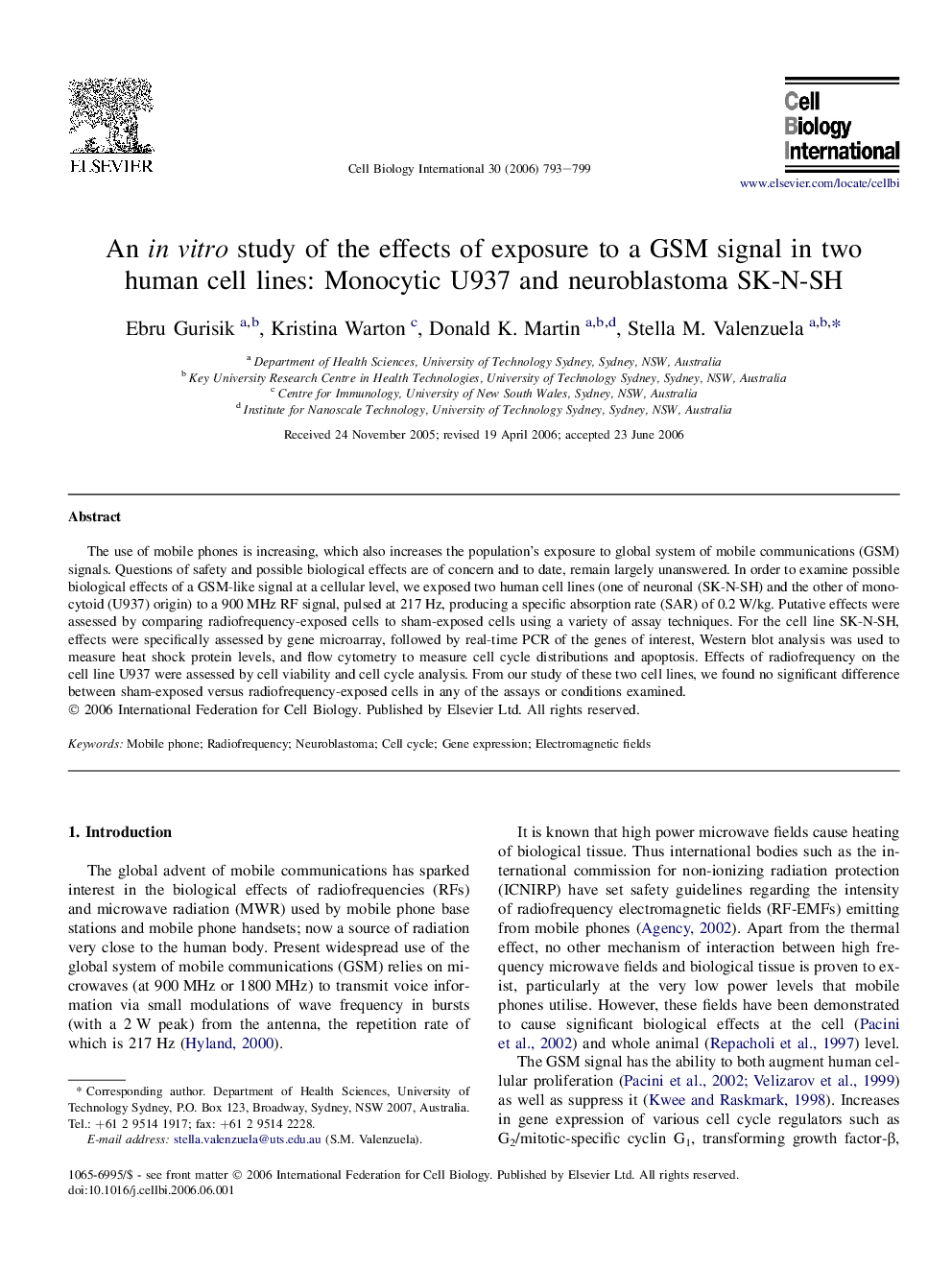| Article ID | Journal | Published Year | Pages | File Type |
|---|---|---|---|---|
| 2067821 | Cell Biology International | 2006 | 7 Pages |
Abstract
The use of mobile phones is increasing, which also increases the population's exposure to global system of mobile communications (GSM) signals. Questions of safety and possible biological effects are of concern and to date, remain largely unanswered. In order to examine possible biological effects of a GSM-like signal at a cellular level, we exposed two human cell lines (one of neuronal (SK-N-SH) and the other of monocytoid (U937) origin) to a 900Â MHz RF signal, pulsed at 217Â Hz, producing a specific absorption rate (SAR) of 0.2Â W/kg. Putative effects were assessed by comparing radiofrequency-exposed cells to sham-exposed cells using a variety of assay techniques. For the cell line SK-N-SH, effects were specifically assessed by gene microarray, followed by real-time PCR of the genes of interest, Western blot analysis was used to measure heat shock protein levels, and flow cytometry to measure cell cycle distributions and apoptosis. Effects of radiofrequency on the cell line U937 were assessed by cell viability and cell cycle analysis. From our study of these two cell lines, we found no significant difference between sham-exposed versus radiofrequency-exposed cells in any of the assays or conditions examined.
Related Topics
Life Sciences
Biochemistry, Genetics and Molecular Biology
Biophysics
Authors
Ebru Gurisik, Kristina Warton, Donald K. Martin, Stella M. Valenzuela,
